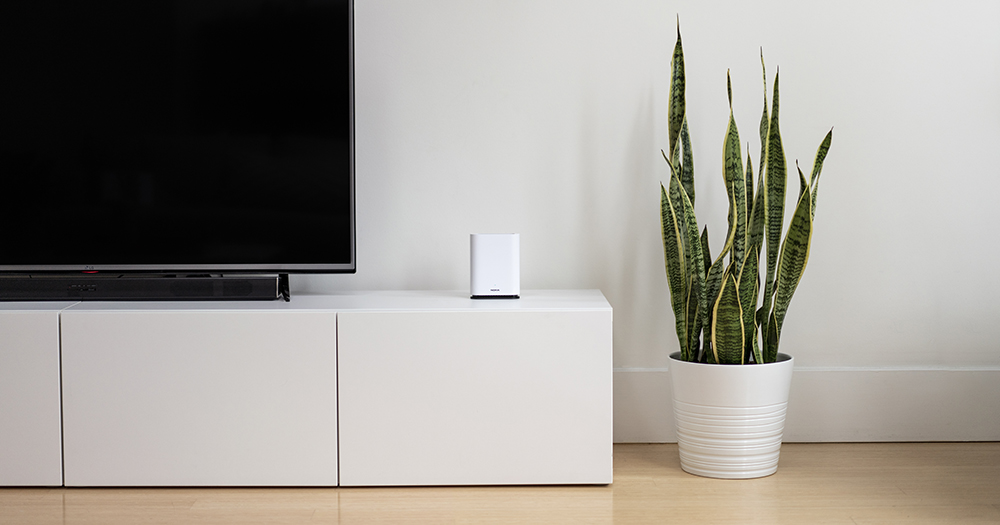So you’ve bought a new WiFi router.
You set it up in your house, only to discover that your favourite spot in the living room for surfing online is getting a stronger reception from the neighbour’s router instead.
Or you find that you now can’t browse TikTok or Instagram in the comfort of your bed without using up your precious mobile data, because it has become a dead zone where the WiFi drops off.
As far as WiFi connectivity goes, there are actually quite a number of factors in your house that can affect WiFi strength.
These factors range from your walls to your microwave, to how high the router is placed and even your fish tank.
Wait, so walls do actually affect WiFi strength after all?
Yes they can.
Concrete absorbs radiation quite strongly, which in turn means that it can be quite adept at absorbing WiFi signals.
Overly thick walls can be a problem in particular, especially if they also contain insulation material, water pipes, and air ducts.
Additionally, mirrors, or rather, the metal within them, are also capable of reflecting WiFi signals from its surface.
So if there are multiple walls and mirrors between your room and your router, you can definitely expect to have much weaker reception.
So does this mean I need to tear down the walls between the WiFi router and my room?
Thankfully, you do not have to.
Instead, what you can do is to place your router in a central location within your home to ensure that the signals can reach most of your house.
If there is no central location to place the router, then what you should do is to shift it closer to rooms where people use their devices the most frequently.
Does the height of my router’s location affect signal strength too?
Yes.
The high ground matters, even for WiFi.
This is because WiFi signals tend to travel downwards the further they are from the transmitter.
As such, it is ideal to either place your router on a shelf or set it on a wall for a better signal.
Can other electronic devices affect my router?
Definitely!
These include devices such as your microwave, television, and even your cordless phones.
This is due to many of these devices operating on the same wavelength as WiFi signals.
For example, microwaves operate at 2.45 GHz on the radio spectrum while one of the ranges that WiFi signals operate at is 2.4 GHz. This makes it easy for microwaves to disrupt a WiFi signal, especially if your router is placed nearby.
What else affects my router?
Water.
If you have a fish tank in your house, it’s better to place it away from your router, as a huge body of water can inhibit the signal being emitted.
In general, your WiFi is quite sensitive
You would have probably realised by now that your WiFi is actually quite sensitive to the environment.
But it’s also important to note that these are problems that can be fixed by the simple act of shifting your router around.
Alternatively, you can also consider looking at StarHub’s Smart WiFi -- a WiFi router that is able to monitor congestion, interference and signal strength of your WiFi connection.
In addition, it can also automatically switch between WiFi channels and frequencies to find the best channel to provide you with a smoother surfing experience and greater WiFi coverage in every part of your home.
It is also easy to set up: all you need to do is scan a QR code on a mobile app which will guide you through the installation.
What’s more, if you’re an existing StarHub broadband customer, you can get StarHub Smart WiFi at S$120 per unit for better home coverage too.
This sponsored post made this writer do a bit of shifting at home so that he can better enjoy surfing Instagram in his bed.
Top photo from StarHub
If you like what you read, follow us on Facebook, Instagram, Twitter and Telegram to get the latest updates.
